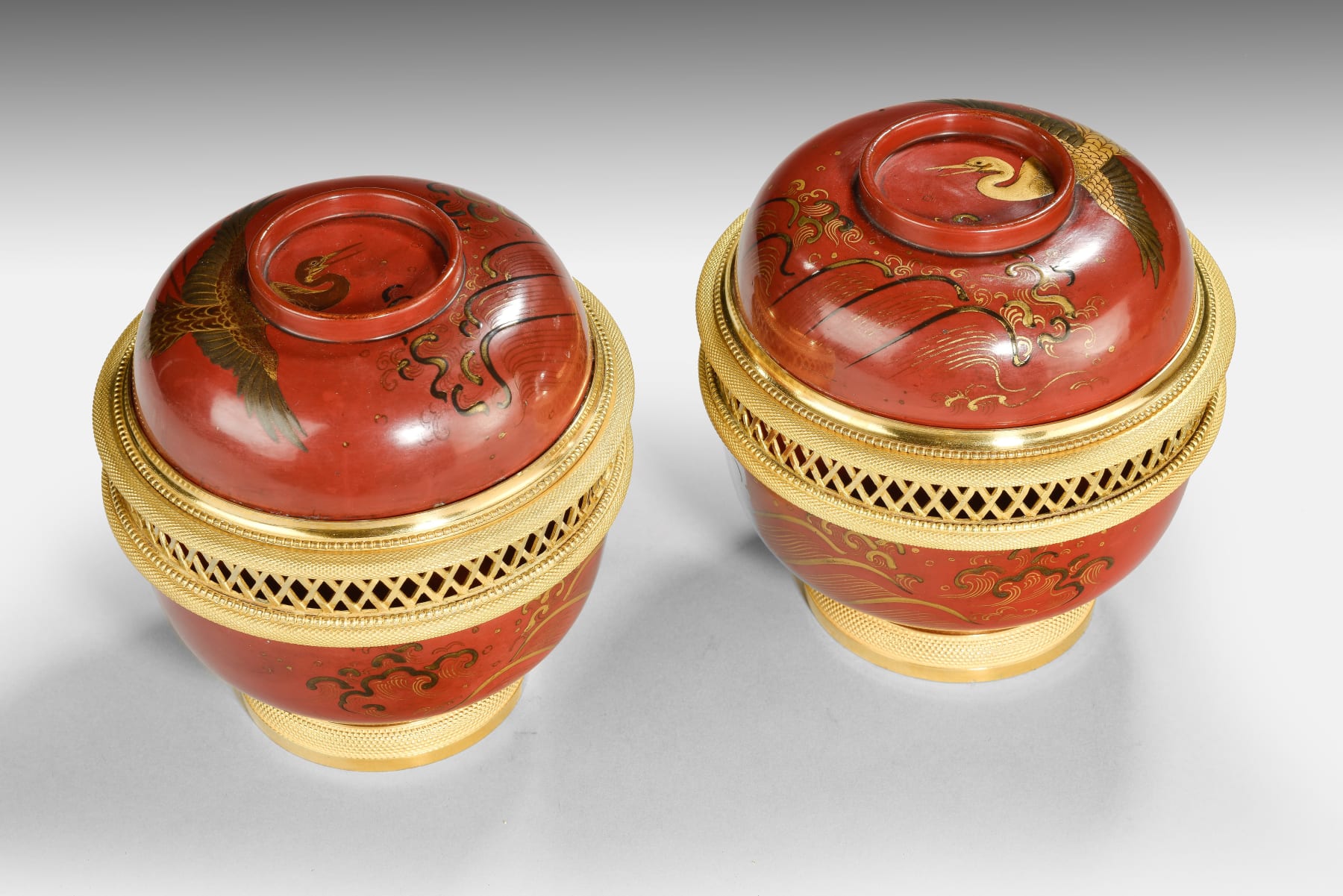Pair of Japanese Lacquered ‘Pot Pourri’ Vases with covers with ormolu mounts
ENGLAND, circa 1800
15 x 14 cm
Further images
Ormolu mounted lacquer ‘pot pourri’ vases – the bowls of Japanese lacquer, the exterior in red and gold lacquer, decorated with cranes. The mounts with English mercurial gilding.
‘Tsuru’ – The Japanese Crane: Throughout history, birds have been viewed as animals of special value and have been endowed with meanings often drawn from legends and stories that have endured over many generations. For the Japanese, the crane—or tsuru—is considered a national treasure, appearing in art, literature, and folklore. The Japanese regard the crane as a symbol of good fortune and longevity because of its fabled life span of a thousand years. It also represents fidelity, as Japanese cranes are known to mate for life. Over time, the crane has also evolved as a favourite subject of the Japanese tradition of paper folding—origami—as children and adults attempt to master this art.
Japanese lacquerware has always been highly prized in the West, but in the 18th century few examples reached Europe. Such rarity made lacquer all the more sought after and pieces were sometimes transformed to conform to western tastes and lifestyle.






